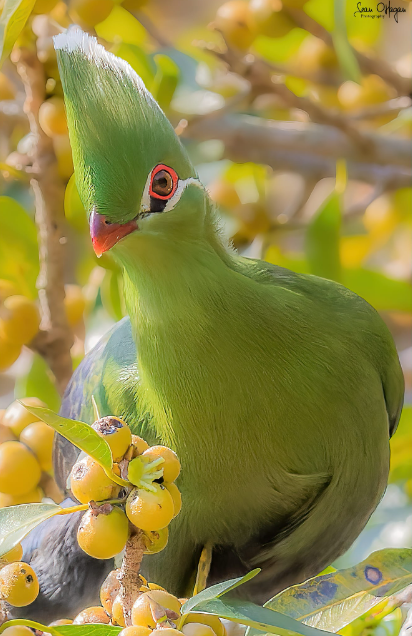Magoebaskloof birding: Woodbush Forest, Endemics, Habitats
Magoebaskloof birding: Woodbush Forest and Magoebaskloof together constitute the second largest forest complex in South Africa. The Knysna Forest in the Western Cape is the largest.
Magoebaskloof and the Woodbush Forest in Limpopo, South Africa, are renowned birdwatching destinations, especially for lovers of forest species and endemics. These areas are among the country’s best spots for experiencing Afro-montane forests and their diverse birdlife. Here’s a detailed guide to birding in Magoebaskloof and Woodbush Forest:

Endemic Birds
- Black-fronted Bushshrike: This rare and localized species is one of the key birding targets in the Woodbush Forest, typically seen in dense foliage.
- Cape Parrot: One of South Africa’s most sought-after species, the Cape Parrot is often seen flying over the forest canopy.
- Knysna Turaco: A vibrant bird, often found flitting through the forest canopy.
- Yellow-streaked Greenbul: Frequently found in the misty forests of Magoebaskloof, this species can be seen foraging among the trees.
- Olive Woodpecker: This forest woodpecker is often spotted on tree trunks in the deeper parts of the forest.
- Lemon Dove: Found in the undergrowth, this species is shy but can be seen in the quieter parts of the forest.
- Bar-throated Apalis: A vocal species often found in mixed-species flocks in the forest.
Magoebaskloof birding Habitats
- Afro-montane Forests: Magoebaskloof and Woodbush Forests are characterized by lush Afro-montane vegetation, including tall trees, dense canopies, and a rich understory. These forests provide the perfect habitat for species like the Knysna Turaco, Cape Parrot, and forest-dwelling warblers and greenbuls.
- Grasslands and Montane Heathlands: Surrounding the forests are grasslands and heathlands, home to species like cisticolas, pipits, and even occasional raptors.
- Riverine and Wetlands: Several streams and small rivers run through the area, attracting species such as kingfishers, herons, and waterfowl.
Access
- Magoebaskloof: Accessible via the R71 road, which connects Tzaneen and Haenertsburg. The forested parts of Magoebaskloof are easily reached by car, and there are several walking trails in the area.
- Woodbush Forest: The Woodbush Forest Drive is the main birding route, a 10 km gravel road that runs through the forest. This road is accessible by most vehicles, though a 4×4 is recommended in wet conditions. The route offers excellent birdwatching opportunities as it traverses through prime forest habitat.
- Hiking Trails: There are several well-maintained hiking trails that offer access to deeper sections of the forest. These trails provide opportunities to see forest species up close and experience the tranquility of the environment.
Facilities
- Accommodation: There are several accommodation options in the Magoebaskloof area, ranging from guest lodges and campsites to self-catering cottages. Popular spots include Kurisa Moya Nature Lodge, which caters to birdwatchers, and Magoebaskloof Hotel.
- Bird Hides: Some bird hides are available at the Debengeni Waterfalls area, offering a chance to see forest and water-associated species in a peaceful setting.
- Guided Birding Tours: Local guides are available for hire and offer guided birding tours that can significantly enhance the experience by helping birders find elusive forest species.
- Picnic Areas: There are designated picnic sites, particularly around scenic spots like the Debengeni Waterfalls, where visitors can enjoy the forest surroundings while birdwatching.
- Visitor Information Centers: The nearby towns of Haenertsburg and Tzaneen offer visitor information centers where you can get more details about birding routes and maps of the area.
Magoebaskloof birding conclusion:
Magoebaskloof and Woodbush Forest are excellent destinations for birders seeking forest species and rare endemics. The mix of lush Afro-montane forest, montane grasslands, and rich biodiversity makes this area one of South Africa’s premier birdwatching locations.
More great birding spots in the Limpopo Province:
Problem displaying Facebook posts. Backup cache in use.
Click to show error


